- BTEC Unit 4: Leadership and Management Assignment Brief 1 2025-26, City of London College
- Culinary Arts Management (chef) Assignment Social Science Research Proposal , University College Birmingham (UCB)
- Unit 4002 Engineering Mathematics (A/651/0708) Assignment Brief 2025-2026, Barnsley College (BC)
- Nutrient Diploma Course Assessment 2025-26, The College of Naturopathic Medicine
- Unit 3 Management of Human Resources Pearson BTEC Diploma Assignment Brief 2025-2026 – Lyceum Campus UK
- NAM4034 Fundamental skills for Nursing Written Care Plan CW1 Assignment Brief Academic Year 2025-26, Buckinghamshire New University (BNU)
- Unit 5006 Further Mathematics – Pearson BTEC Level 5 Diploma Assignment 2025-2026, Leeds City College
- BIT4213 Fundamental of Cryptography Individual Assignment 1 – Understanding Cryptographic Techniques
- WNI077 Nutrition and Digestion Graded Assignment 2 Brief : Access to HE Diploma – Health and Social Care
- FDY3003 Exploring the Social World Assignment Essay – Arden University UK
- Mechanical Engineering Assessment: Design and Development of an Aerodynamics Package
- 7CO04 Business Research in People Practice Learner Assessment Brief
- Fundamentals of Chemistry Assignment Brief Workbook Task 1 and Task 2
- Managing Information System Assignment – A Case Study on Amazon
- Unit 5 Furniture and Accessories in Interior Design Assignment – National Design Academy
- 6ENT2030 Geotechnical Design Assignment Brief – University of Hertfordshire
- Network and Security Assignment Project Report for Global Enterprises
- Unit 5011 Industrial Power Electronics and Storage Pearson BTEC Level 5 Assignment Brief
- NU7020 Leadership and Quality Improvement and Governance Assignment – Trinity College Dublin (TCD)
- BTEC Level 3 Business Unit 4: Managing an Event – Assessment Brief
Level 3 Diploma in Business Management – Finance in Business Assignment : Recording, Reporting, and Financial Decision Making
| University | London College of Professional Studies ( LCPS) |
| Subject | Finance in Business |
Level 3 Diploma in Business Management
Unit Aims
The aim of this unit is to provide learners with the fundamental knowledge required to record financial transactions and produce financial statements. Learners will develop an awareness of different finance and accounting techniques such as the double entry accounting system, budgeting and investment appraisal. This will enable learners to effectively record financial transactions and produce accounting statements.
Learning Outcomes and Assessment Criteria
| Learning Outcomes – The learner will: | Assessment Criteria – The learner can: |
| 1. Know about business finance. | 1.1 Explain why a business would keep financial records. 1.2 Explain the purpose of business accounting. 1.3 Explain the accounting requirements of different types of business. 1.4 State different types of business finance at different stages in the growth of a business. 1.5 Explain the different types of accounting and financial statements. |
| 2. Be able to record financial transactions. | 2.1 Demonstrate accurate use of the double entry accounting system. 2.2 Demonstrate accurate bank reconciliation. 2.3 Develop control accounts for accounts receivable and accounts payable. 2.4 Demonstrate how to correct errors in accounting records. |
| 3. Know about cost and management accounting. | 3.1 Explain how absorption and marginal costing is used for decision-making. 3.2 Explain how budgeting is used for financial planning and control. 3.3 Explain how to undertake investment appraisal. |
| 4. Be able to produce accounting statements. | 4.1 Produce accurate absorption and marginal cost statements. 4.2 Calculate sub and overall variances. 4.3 Prepare accurate and subsidiary budgets. 4.4 Apply investment appraisal methods to alternative capital investment options. |
Do You Need Assignment of This Question
Assignment Brief
Task 1 of 4 – Assessment Criteria 1.1, 1.2, 1.3, 1.4 and 1.5 are assessed in this task.
Instructions
Write a 500 word report which;
- explains three reasons why a business would keep financial records
- explains two reasons why a business uses business accounting
- explains three different types of accounting and finance statements
- explains the accounting requirements of two different types of business and
- lists different types of finance at different stages in the growth of a business.
Task 2 of 4 – Assessment Criteria 2.1, 2.2, 2.3 and 2.4 are assessed in this task.
Instructions
Using a set of financial data from either a business you are familiar with or a case study presented by your teacher;
- produce a record of transactions using the double entry system
- reconcile these transactions based on the business’ bank statements
- develop a set of control accounts for the business’ accounts payable and accounts receivable and
- make any necessary corrections which you identify in the data.
Task 3 of 4 – Assessment Criteria 3.1, 3.2, 3.3 and 3.4 are assessed in this task.
Instructions
Produce a 300 word essay which;
- explains how the same business from task 2 would use absorption costing and marginal costing as part of its decision making process
- explains how the same business uses budgets to support financial planning and control and
- explains two appropriate investment appraisal techniques which the same business could use to determine which new production equipment to invest in.
Task 4 of 4 – Assessment Criteria 4.1, 4.2, 4.3 and 4.4 are assessed in this task.
Instructions
using the same financial data from task 2;
- produce accurate absorption and marginal costing statements and
- calculate sub and overall variances.
using a new set of financial data for the same business;
- prepare accurate and subsidiary budgets
apply the two investment appraisal techniques from task 3 to a set of financial data relating to the purchase of new production equipment.
Note: To achieve a ‘pass’ for this unit, learners must provide evidence to demonstrate that they have fulfilled all the learning outcomes and meet the standards specified by all assessment criteria.
| Learning Outcomes to be met | Assessment criteria to be covered | Type of assessment | Word count (approx. length) |
| All 1 to 4 | All AC under LO1 to LO4 | Portfolio of evidence | 3000 words |
Buy Answer of This Assessment & Raise Your Grades
Many students struggle with Finance in Business assignments because they involve double entry accounting, financial statements, costing methods, budgeting, and investment appraisal. Our experts at Students Assignment Help UK provide Finance assignment help that is plagiarism-free, AI-free, and aligned with university standards. Get our university assignment help support today and score higher with ease.




